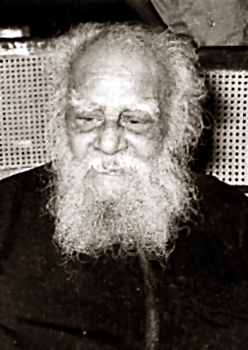 Kazhagam is a society working for the welfare of the dravidians in the name of race and birth and against supression and oppression and also for their freedom and welfare. In plain fact in the name of Hindu dharma the dravidians are called the 4th caste and even untouchables and collectively grouped as sudras. There are many references to this in Hindu writings by aryans. For example in the 10th chapter of Manudharma sastra under ‘sankara’ caste there is difference to people who follow the dharma and those who don’t follow. A child born to a brahmin woman by a sudra is called Chandala ‘paraya’ caste. A child born to brahmin by a Sudra woman is called in aryavartha a fisher caste. Also children born of mixed castes are called ‘Sakiliya’. Those who handle dead body and eat left overs are called ‘Paraiyar’. It is very clearly stated that those who ruled Dravida Desa are sudras. This is in Manu dharma Chapter 10, Sloka 44. Also it is said that all who speak ‘Millecha’ languages are ‘Dasus’. This is in Chapter 10, 44th sloka. Dasus means robbers Further it states that these are low and untouchables. These are stressed in Manudharma. This same opinion is found in chap. 10. as ‘Sankara’ caste. These people must live away from towns and villages in forests, burial grounds and these must be known to all people. This is mentioned in sloka 50.
Kazhagam is a society working for the welfare of the dravidians in the name of race and birth and against supression and oppression and also for their freedom and welfare. In plain fact in the name of Hindu dharma the dravidians are called the 4th caste and even untouchables and collectively grouped as sudras. There are many references to this in Hindu writings by aryans. For example in the 10th chapter of Manudharma sastra under ‘sankara’ caste there is difference to people who follow the dharma and those who don’t follow. A child born to a brahmin woman by a sudra is called Chandala ‘paraya’ caste. A child born to brahmin by a Sudra woman is called in aryavartha a fisher caste. Also children born of mixed castes are called ‘Sakiliya’. Those who handle dead body and eat left overs are called ‘Paraiyar’. It is very clearly stated that those who ruled Dravida Desa are sudras. This is in Manu dharma Chapter 10, Sloka 44. Also it is said that all who speak ‘Millecha’ languages are ‘Dasus’. This is in Chapter 10, 44th sloka. Dasus means robbers Further it states that these are low and untouchables. These are stressed in Manudharma. This same opinion is found in chap. 10. as ‘Sankara’ caste. These people must live away from towns and villages in forests, burial grounds and these must be known to all people. This is mentioned in sloka 50.
These dravidians must rear dogs and donkies. They must not possess cows. Dear Dravidian friends, note, these people must wear cloth used for burial. They must eat rice in broken vessels. They must not use metal utensils. They must wear jewellery made of iron and brass metals. For their living they must search for work. They must not appear at functions. They must not speak with high castes. They must marry within their castes. No one should have direct dealing with them. Food for them must be left in broken vessels. They must not come into villages at nights. Even if they wear clean cloth they must be treated as low castes. There is a saving grace, about seven or eight years ago Gandhi came here and said if a child is born to a sudra woman by a brahmin, and then such birth occurs for seven generations, on the 7th birth it can be called a brahmin. This is what Gandhi said when he came to Thirupur.
A sudra cannot be a brahmin by doing brahmin’s work. Whatever low work a brahmin does still he is a brahmin not a sudra. Even if sudra does the work of a brahmin he is still a sudra. This is ordained by Brahma. Chap 10, Slokam 73 A brahmin may do any work but not farming. If there are no sudras to do this work, foreigners can be employed. Chap. 10, sloka 88. In farming iron plough and iron scraper has to be used. Brahmins must never do farming.Chap 10, Sloka 84 If a low caste does the work of a high caste all his earnings can be confiscated and the king can banish him from his country. Chap 10, sloka 96. A sudra cannot engage in religious rituals.Chap 10, sloka 126. A sudra however clever cannot earn more than what is necessary for his livelihood. If he does it will hurt the brahmin Chap 10, sloka 129.
A sudra cannot engage in performance of yangna. A brahmin can forcefully take away excess wealth from Sudra. Chap 11, sloka 13. A suras are also sudras. There is evidence for this in Manudharma sastra, Chap 11, sloka 20. Asuras do not perform yangna. Confiscating their wealth is dharma. Dravidians are sudras. They have no right to yangna. Those who don’t perform yangnas are asuras. If these rules are in Manudharma, Manudharma sastra is Hindu dharma. How are sudras hindus? Please note this carefully This disgrace must not happen to Dravidians. All these must be removed specially from Dravidian soil (Chennai Province) Dravida Kazhagam accepts this. There is no definitions to Andhra, Kerala and Karnataka. They are all mixed. Language is taken as definition of land. We are accepting Manudharma.
Is there any other explanation?
(Kudiarasu, 20.9.1947)
You can send your articles to This email address is being protected from spambots. You need JavaScript enabled to view it.

